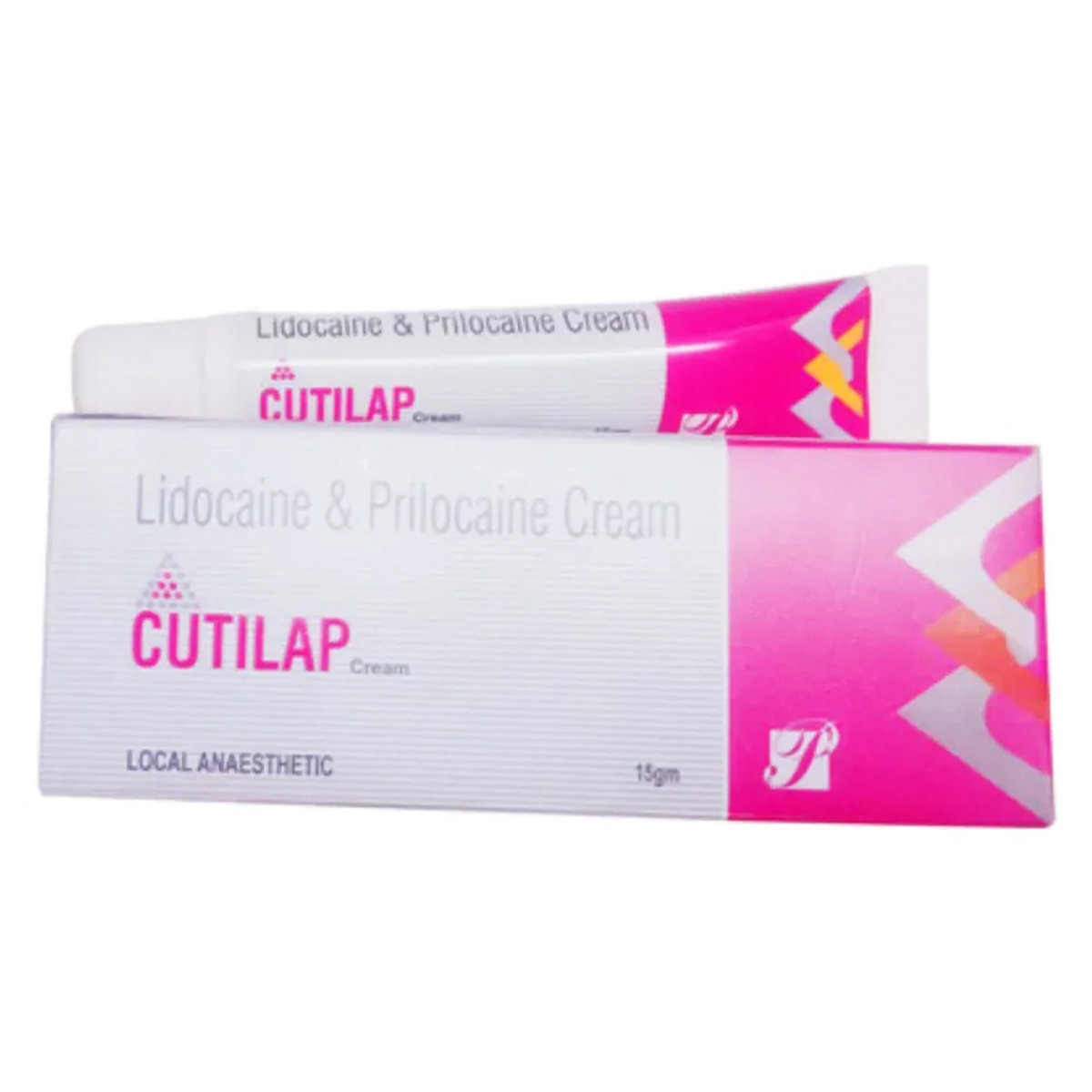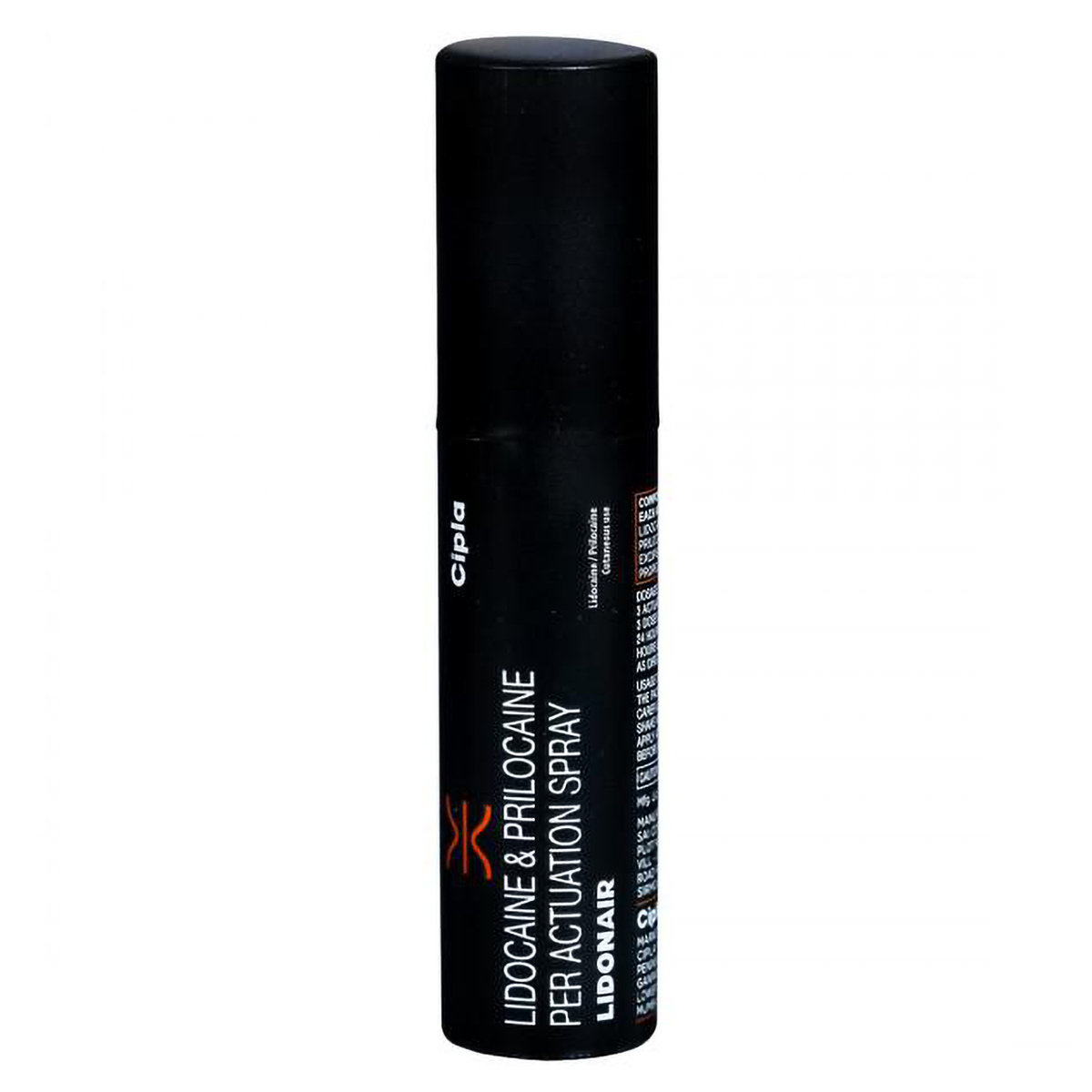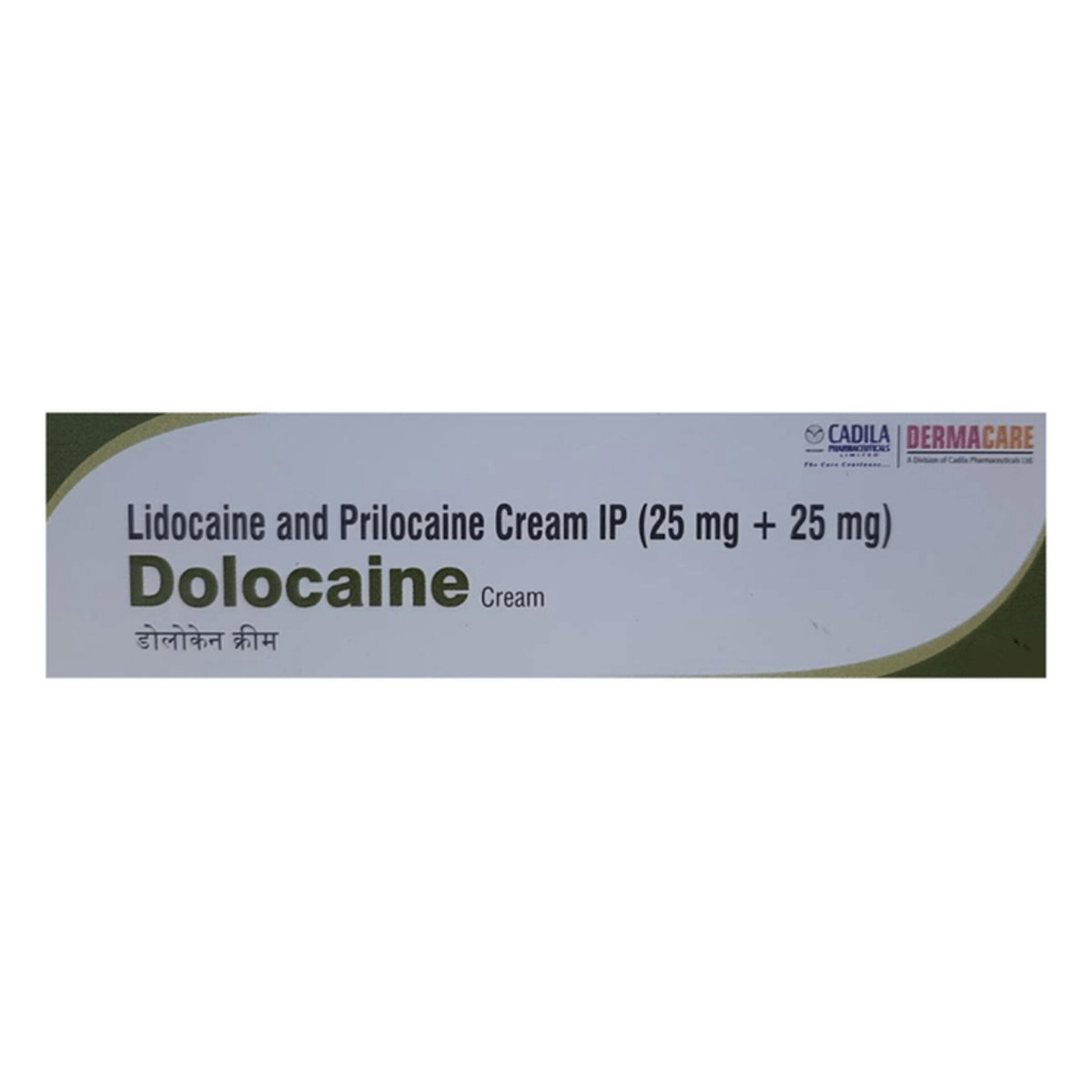Lidocaine+prilocaine
About Lidocaine+prilocaine
Lidocaine+prilocaine belongs to the class of local anaesthetics known as 'numbing medication' used to produce local numbness (anaesthesia) on skin before surgical procedure or injections. Pain is a symptom triggered by the nervous system, which causes uncomfortable sensations in the body. Pain may be dull or sharp, it might be constant or intermittent. The tolerance level of pain might vary from person to person.
Lidocaine+prilocaine is a combination of amide-type local anaesthetics: Lidocaine and Prilocaine. Lidocaine+prilocaine blocks the influx (entry) of sodium ions into the membrane that surrounds the nerves, thereby preventing initiation and conduction of impulses. Hence, it gives an anaesthetic effect and helps decrease the sensation of pain.
Use Lidocaine+prilocaine as suggested by your doctor. Do not apply it to broken, irritated skin or open wounds unless directed by your doctor. In some cases, you may experience certain common side-effects such as reactions at the application site (burning, itching, redness and irritation). Most of these side-effects do not require medical attention and will resolve gradually over time. However, you are advised to talk to your doctor if you experience these side-effects persistently.
Before using Lidocaine+prilocaine, tell your doctor about your medical history, especially if you have broken skin/infection in the area where Lidocaine+prilocaine to be applied, heart disease, liver disease, a certain blood disorder (methemoglobinemia). Inform your doctor before using Lidocaine+prilocaine if you plan to get pregnant, are pregnant or breastfeeding. If Lidocaine+prilocaine comes in contact with eyes, nose, mouth, rectum, or vagina rinse with water immediately. Do not apply Lidocaine+prilocaine on the swollen skin areas or deep puncture wounds. Inform your doctor about your health condition and medications before using Lidocaine+prilocaine to rule out any side-effects.
Uses of Lidocaine+prilocaine
Medicinal Benefits
Lidocaine+prilocaine is a combination of amide-type local anaesthetics, namely: Lidocaine and Prilocaine. Lidocaine+prilocaine is used to produce local numbness (anaesthesia). It is used to numb the normal, unbroken skin or on the outer genital area to prevent pain before surgical procedures such as inserting a needle, skin grafts or skin laser surgery. Lidocaine+prilocaine works by blocking the transmission of the nerve signals in the body, thereby helps in decreasing the sensation of pain.
Directions for Use
Storage
Side Effects of Lidocaine+prilocaine
- Itching
- Rash
- Mild burning at the site of the application
- Changes in skin colour at the site of application
Drug Warnings
Use the recommended dose of Lidocaine+prilocaine to numb the skin. Do not exceed the dose and duration and don't cover treated skin areas with a bandage without the doctor's advice. In some cases, Lidocaine+prilocaine can cause fatal side effects such as uneven heartbeats, seizure (convulsions), coma, slowed breathing or respiratory failure (breathing stops), if too much of the medicine is absorbed through the skin. Consult your doctor before using Lidocaine+prilocaine if you are pregnant or breastfeeding, your doctor will prescribe you Lidocaine+prilocaine only if the benefits outweigh the risks. Lidocaine+prilocaine causes drowsiness, so drive with caution. Avoid consuming alcohol along with Lidocaine+prilocaine as it could lead to increased drowsiness. Lidocaine+prilocaine may not be suitable for people with a blood disorder, glucose-6-phosphate dehydrogenase (G6PD) deficiency, kidney or liver problems. Inform your doctor about your health condition and medications before using Lidocaine+prilocaine to rule out any side-effects.
Drug Interactions
Drug-Drug Interaction: Lidocaine+prilocaine may have interaction with antimalarial drugs (chloroquine, quinine), medicines used to treat seizures (fits) (phenobarbital, phenytoin, primaquine), heart rhythm and blood pressure-lowering medication (amiodarone, dofetilide, dronedarone, mexiletine, sotalol, tocainide, nitroprusside, nitroglycerin, isosorbide), antibiotics (nitrofurantoin).
Drug-Food Interaction: Avoid consuming alcohol along with Lidocaine+prilocaine as it could lead to increased drowsiness.
Drug-Disease Interaction: Lidocaine+prilocaine may interact with a blood disorder, heart dysfunction, liver problems and kidney dysfunction.
Drug-Drug Interactions Checker List:
Safety Advice

Alcohol
cautionYou are recommended to avoid alcohol consumption while using Lidocaine+prilocaine. Alcohol intake, along with Lidocaine+prilocaine, may cause increased drowsiness.

Pregnancy
cautionLidocaine+prilocaine is pregnancy category B drug. If a lady is pregnant then they can use the medicine only after the doctor's recommendation. Please consult your doctor if you have any concerns regarding this, your doctor will prescribe you Lidocaine+prilocaine only if the benefits outweigh the risks.

Breast Feeding
cautionLidocaine+prilocaine can be only be used in breastfeeding mothers after the doctor's suggestion.

Driving
cautionLidocaine+prilocaine may cause drowsiness, do not drive or operate heavy machinery if you feel drowsy.

Liver
cautionLidocaine+prilocaine should be used with caution in patients with liver impairment/liver disease. Dose adjustment may be needed. Please consult your doctor if you have a liver impairment or any concerns regarding this.

Kidney
cautionLidocaine+prilocaine is safe if prescribed to the doctor in patients with serious kidney disease. Please ask your doctor and tell them about all of your liver problems.

Children
cautionLidocaine+prilocaine is to be used on children only when prescribed by the doctor.
Habit Forming
Diet & Lifestyle Advise
- Maintain a healthy weight by performing regular low-strain exercises and eating healthy food.
- Get adequate sleep as resting the muscles can help in reducing inflammation and swelling.
- De-stress yourself by meditating, reading books, taking a warm bubble bath or listen to soothing music.
- Eat food rich in antioxidants such as berries, spinach, kidney beans, dark chocolate, etc.
- Foods containing flavonoids help in reducing inflammation. These include soy, berries, broccoli, grapes and green tea.
- Avoid smoking and alcohol consumption.
Special Advise
- Do not apply near eyes or open wounds.
- Inform your doctor right away if you develop blistering of the skin where the medication is applied.
Patients Concern
Disease/Condition Glossary
Pain is a symptom triggered by the nervous system, causing uncomfortable sensations in the body. Pain may be dull or sharp, it might be constant or intermittent. The tolerance level of pain might vary from person to person. Pain can be generalized (overall body aches) or localized (affecting a specific area of the body). Pain can be considered a good thing as it helps us know that something is wrong in the body and thereby helps diagnose the condition. The common causes of pain include headache, muscle strain, cramps, cuts, bone fractures, arthritis, stomach ache, etc.
FAQs
Lidocaine+prilocaine contains Lidocaine and Prilocaine. Together, Lidocaine+prilocaine works by blocking pain signals from the nerves to brain. Thus, decreases the sensation of pain.
You are recommended to cover the treated area of skin with bandages or dressings only if advised by your doctor as your body might absorb more amount of Lidocaine+prilocaine if covered.
Do not use Lidocaine+prilocaine after expiry. Expiry refers to the last date that the manufacturer guarantees the full potency and safety of the drug. Check the expiry date from time-to-time and properly discard Lidocaine+prilocaine after expiry or return it to your pharmacist for proper disposal.
Be careful and check no injury occurs at the numb area as you will not feel the pain but still it will hurt you the most after the action of Lidocaine+prilocaine will end.
A person of age 65 or older should use Lidocaine+prilocaine with caution, as directed by the doctor as the chances of occurrence of side effects increase in older people.









